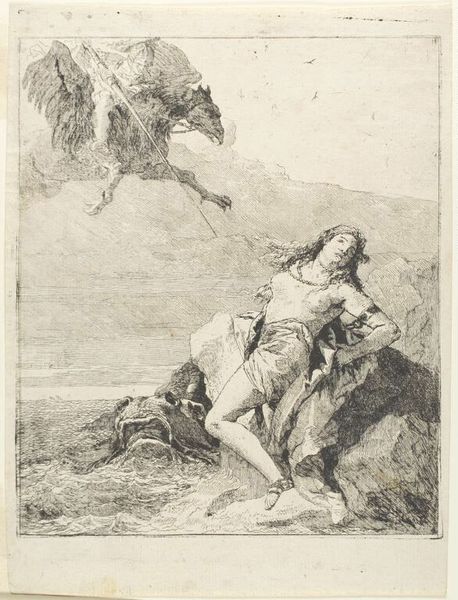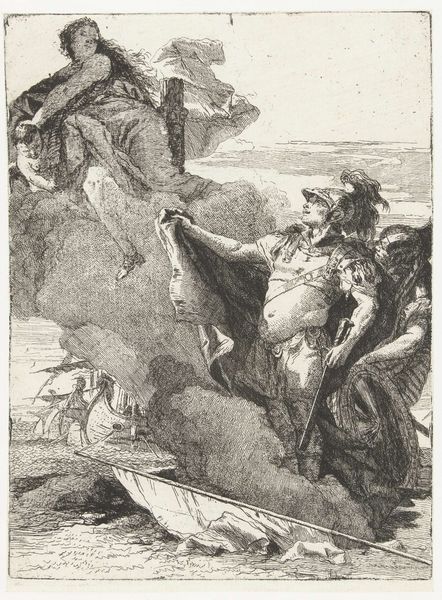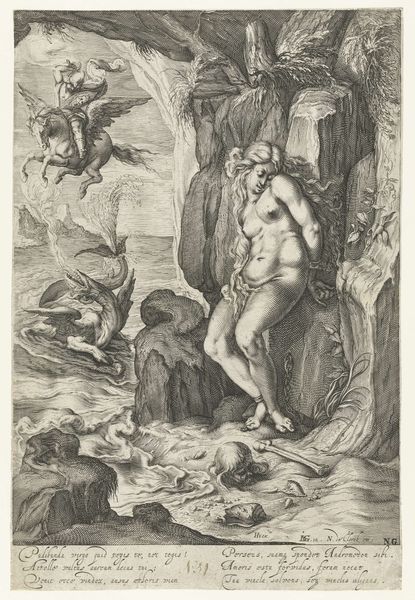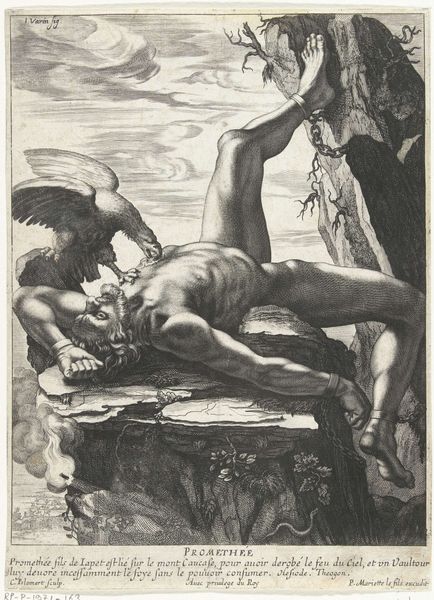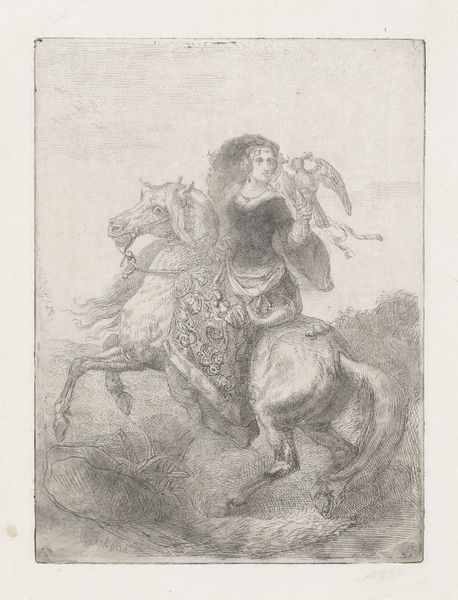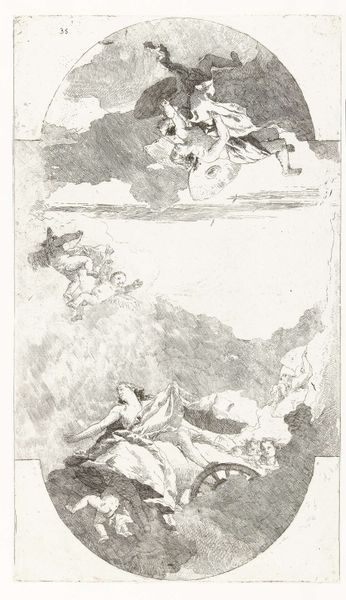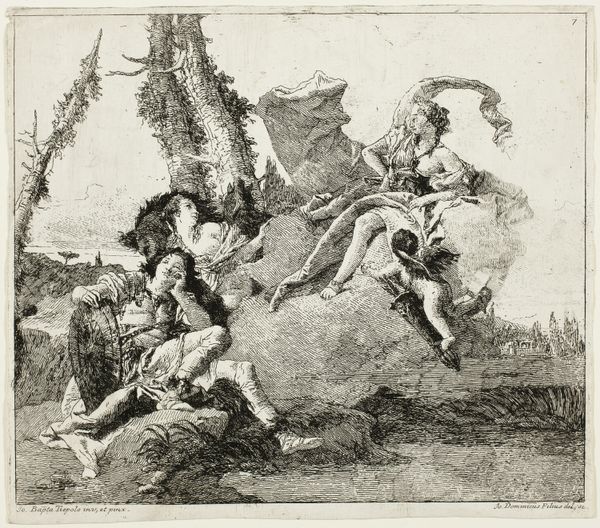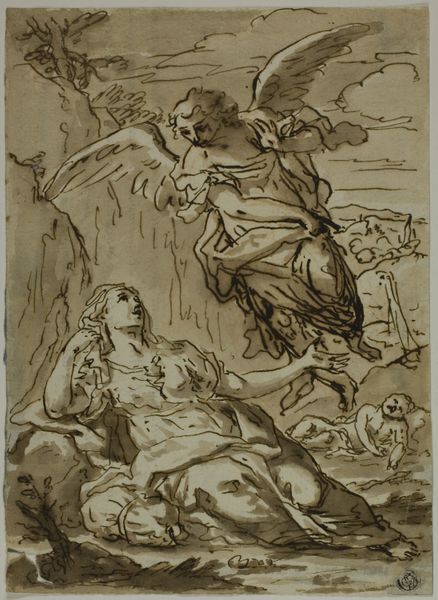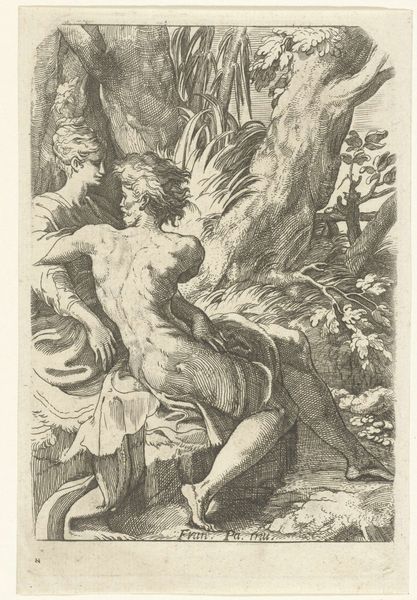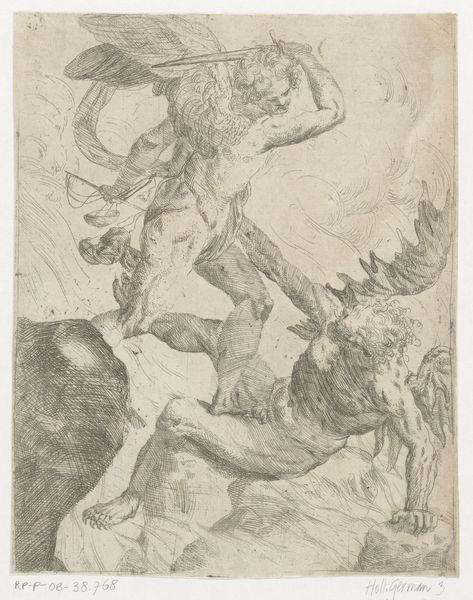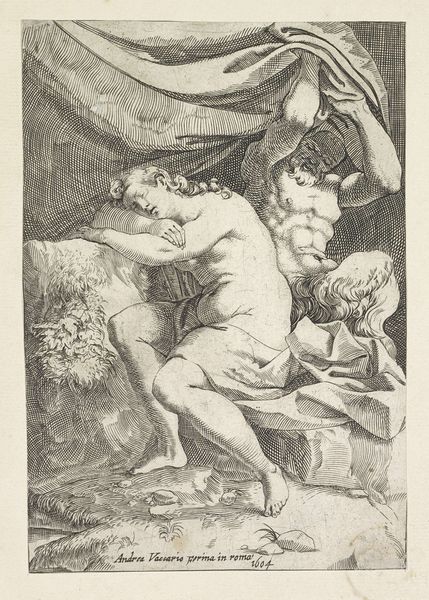
Angelica bedreigt door zeemonster wordt bevrijd door Ruggiero op hippogrief 1757 - 1760
0:00
0:00
print, etching
#
narrative-art
#
baroque
# print
#
etching
#
pencil sketch
#
landscape
#
charcoal drawing
#
figuration
#
pencil drawing
#
pen-ink sketch
#
history-painting
Dimensions: height 245 mm, width 201 mm
Copyright: Rijks Museum: Open Domain
Curator: Here we have Giovanni Domenico Tiepolo's etching, "Angelica bedreigt door zeemonster wordt bevrijd door Ruggiero op hippogrief," created between 1757 and 1760. Editor: The composition really grabs you. The light etches create a dramatic contrast between the frantic energy of the winged horse and the seemingly defeated Angelica chained to the rocks. You can feel the texture in the monster's skin. Curator: This piece captures a dramatic scene from Ariosto's epic poem "Orlando Furioso," a popular subject during the Baroque period. It's essentially a rescue narrative. Look at Angelica, the damsel, victimized and offered up for sacrifice. What are the social dynamics at play? What commentary is being made about gender and power in art? Editor: Absolutely. And let’s not ignore the technique of the etching. Think of Tiepolo meticulously working on the copper plate, controlling the acid to create the image in layers. There is an artisanal aspect that underpins this work's material value, especially given its mass production potential at the time. This intersection of craft and myth is something important. Curator: Right. Mass production also made it possible to democratize a traditionally exclusive narrative and challenge pre-existing structures in which only wealthy patrons can contemplate the "true beauty." Editor: And yet the cost, the very material substrate upon which this story lives. Was it made accessible to Angelica, metaphorically? Consider how the raw materials shape its socio-economic reality, what the means of production were... Who was exploiting what labor to create the media of this image? Curator: That is insightful. By acknowledging that complexity and by recognizing how social power and materiality were always deeply interwoven in the historical narrative—through production, distribution, and even through visual storytelling—we can gain so much understanding. Editor: Seeing this piece from the perspective of its creation adds so many more layers. Understanding the material gives one greater appreciation for what it portrays.
Comments
No comments
Be the first to comment and join the conversation on the ultimate creative platform.
